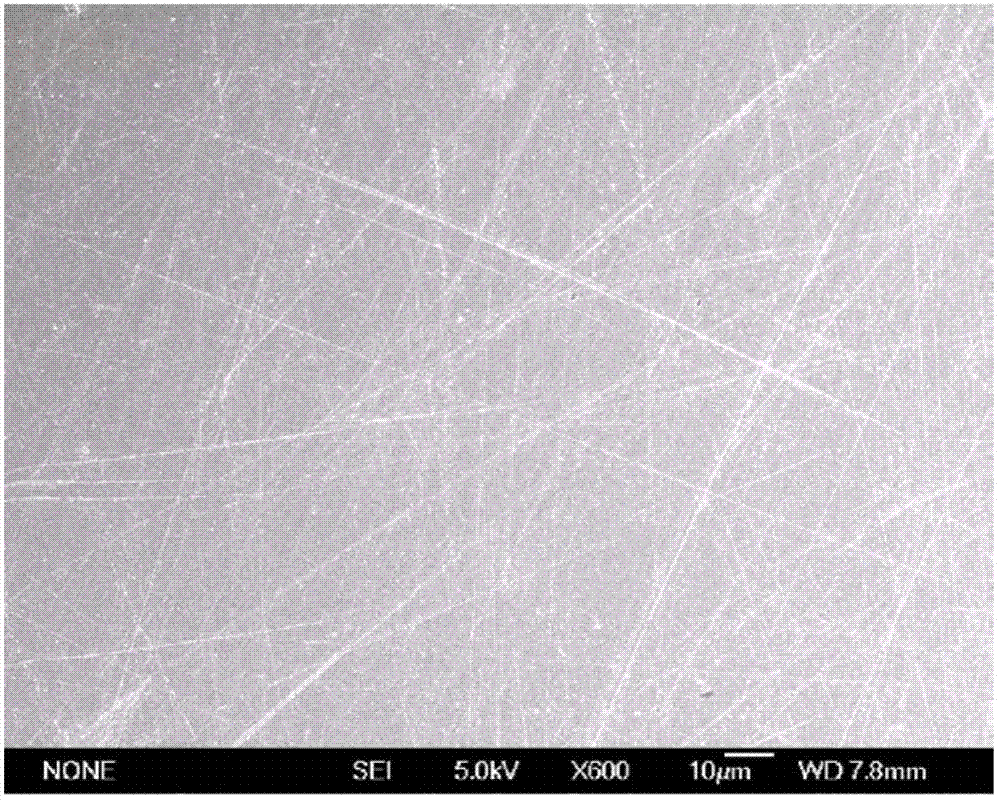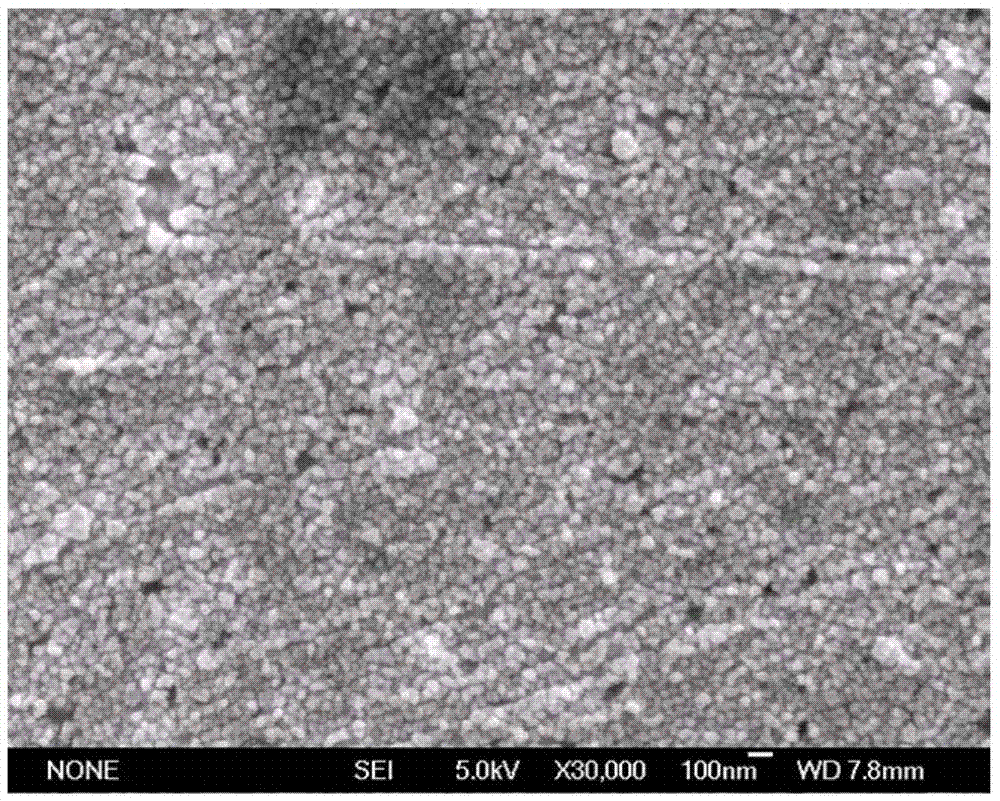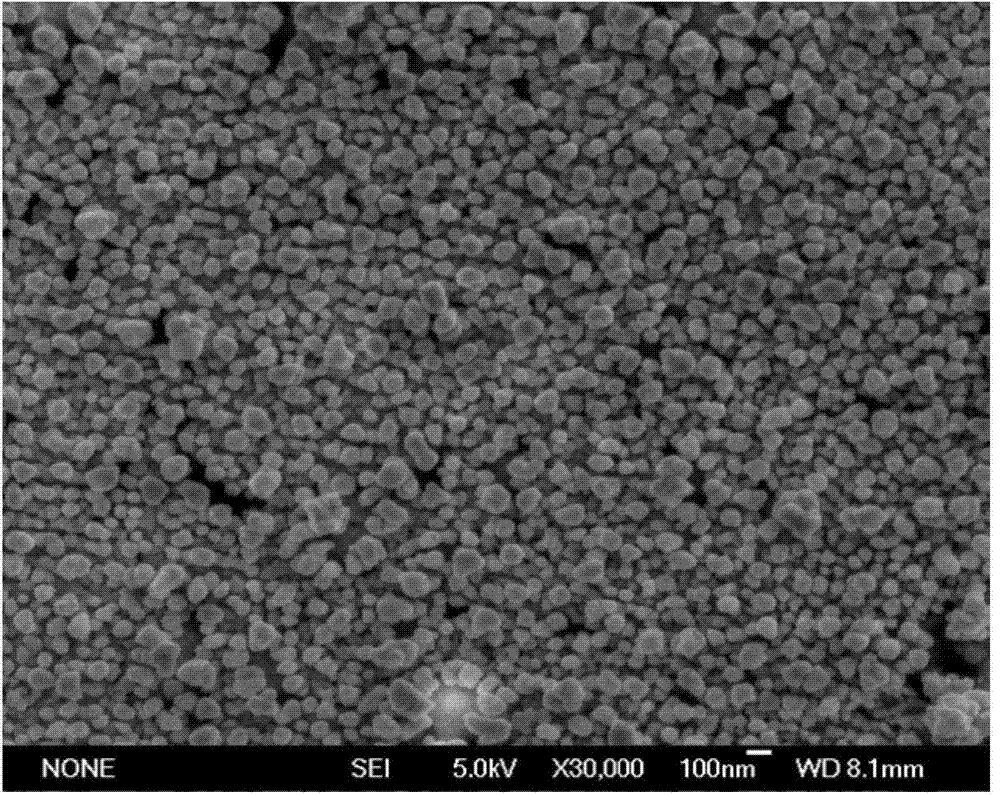Electrochemical sensor of DNA (deoxyribonucleic acid) probe based on fluorescein and sulfydryl modification
A technology of DNA probe and sulfhydryl modification, which is applied in the field of electrochemical sensors of DNA probes, and can solve the problems of probe DNA conformation change and complexity
- Summary
- Abstract
- Description
- Claims
- Application Information
AI Technical Summary
Problems solved by technology
Method used
Image
Examples
Embodiment 1
[0023] An electrochemical sensor based on fluorescein and thiol-modified DNA probes, including electrodes and DNA probes, the electrodes adopt a three-electrode system, wherein the gold electrode is the working electrode, the calomel electrode is the reference electrode, and the platinum wire is the Counter electrode; the two ends of the DNA probe are respectively modified with fluorescein and mercapto; gold nanoparticles are deposited on the surface of the gold electrode; gold-sulfur is passed between the mercapto group modified on the DNA probe and the gold nanoparticles Bonding; the gold nanoparticles and the fluorescein modified on the DNA probe are adsorbed on the surface, making the DNA probe form an arched structure.
[0024] A kind of electrochemical sensor based on fluorescein and thiol-modified DNA probe as above, the specific method of gold electrode and DNA probe assembly is as follows:
[0025] 1) Clean the surface of the gold electrode with a cleaning agent, then...
Embodiment 2
[0029] The formation process of gold nanoparticles on gold electrodes was characterized by SEM. The size and quantity of electrodeposited gold nanoparticles can be controlled by controlling the deposition voltage, solution concentration and deposition time. Figure 1-4 SEM of bare gold electrode and gold nanoparticle modified gold electrode surface. like figure 1 As shown, the surface of the bare gold electrode is basically smooth, and there are no nanoparticles on the surface; when the voltage is low and the concentration of chloroauric acid is relatively dilute, the electrodeposition speed is slow, and after 180s of deposition, there are only some small particles on the surface of the gold electrode, such as figure 2 Shown; at 6mmol L -1 In chloroauric acid solution, after deposition of -400mV (vs.SCE) for 300s, it can be seen that the surface of the gold electrode is covered with a large number of gold nanoparticles, and there are many gaps between these gold nanoparticl...
Embodiment 3
[0032] Select the following sequence as the probe, 5'-T6 -TAG GAA ACA CCA AAG ATG ATA TTT-T 6 -3', respectively modify the two ends of the probe sequence with fluorescein and thiol, the sequence is as follows:
[0033] ssDNA-A:
[0034] 5'-F-T 6 -TAG GAA ACA CCA AAG ATG ATA TTT-T 6 -SH-3', wherein F represents fluorescein.
[0035] ssDNA-B:
[0036] 5'-AAA TAT CAT CTT TGG TGT TTC CTA-3'(Target DNA)
[0037] ssDNA-C:
[0038] 5'-TAC GAG TTG AGA GCA AGC AGA GTT-3'(non-complementary DNA)
[0039] ssDNA-D:
[0040] 5'-AAA TAT CAT CTT TTG TGT TTC CTA-3' (single base mismatch DNA)
[0041] The above artificial sequences were provided by Beijing Saibaisheng Co., Ltd.
[0042] Using the method of Example 1, the ssDNA-A sequence was modified on the bare gold electrode and the nano-gold modified electrode, respectively, and then the modified electrodes were respectively inserted into the PBS buffer solution containing the target DNA, hybridized at room temperature for 1 h, and ...
PUM
| Property | Measurement | Unit |
|---|---|---|
| Peak current | aaaaa | aaaaa |
Abstract
Description
Claims
Application Information
 Login to View More
Login to View More - R&D
- Intellectual Property
- Life Sciences
- Materials
- Tech Scout
- Unparalleled Data Quality
- Higher Quality Content
- 60% Fewer Hallucinations
Browse by: Latest US Patents, China's latest patents, Technical Efficacy Thesaurus, Application Domain, Technology Topic, Popular Technical Reports.
© 2025 PatSnap. All rights reserved.Legal|Privacy policy|Modern Slavery Act Transparency Statement|Sitemap|About US| Contact US: help@patsnap.com



